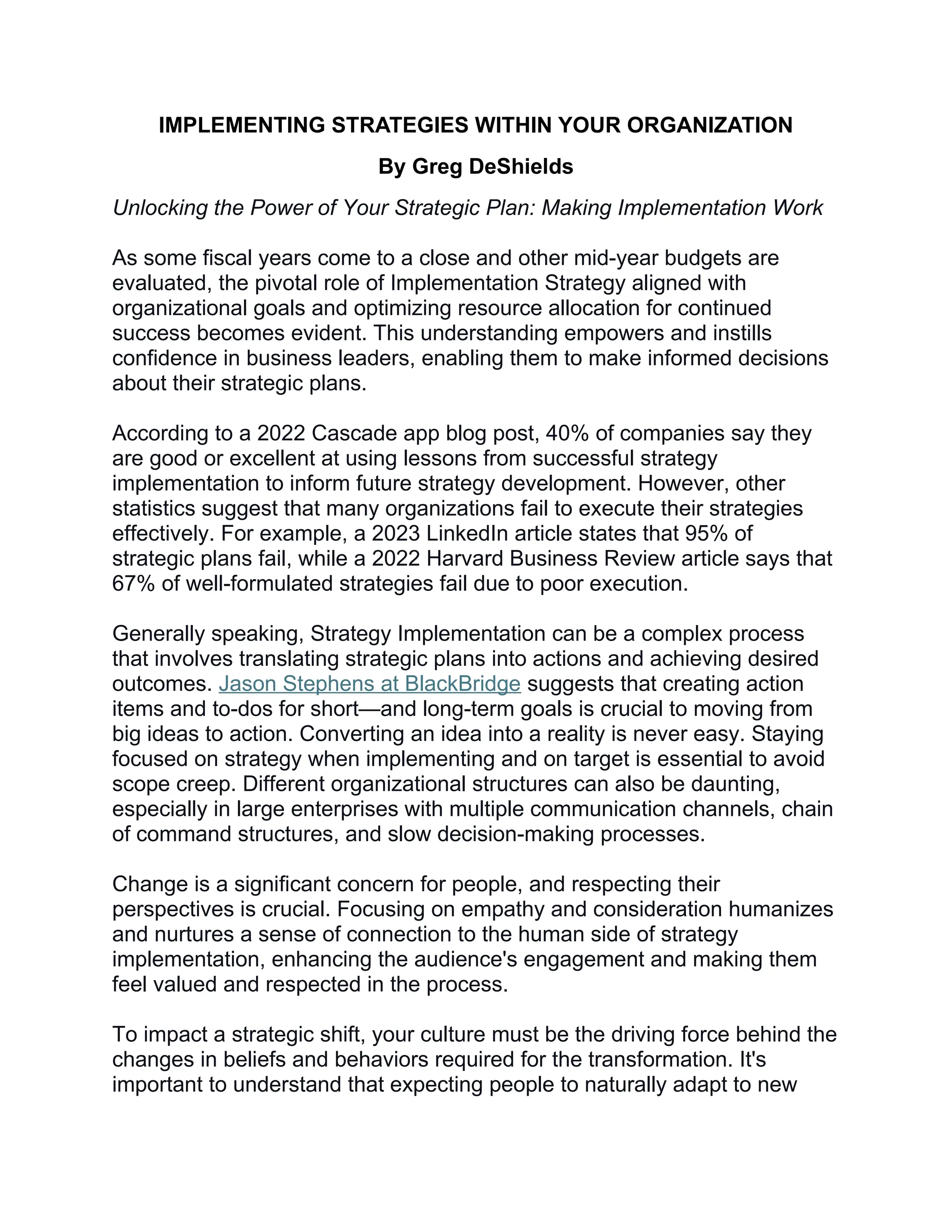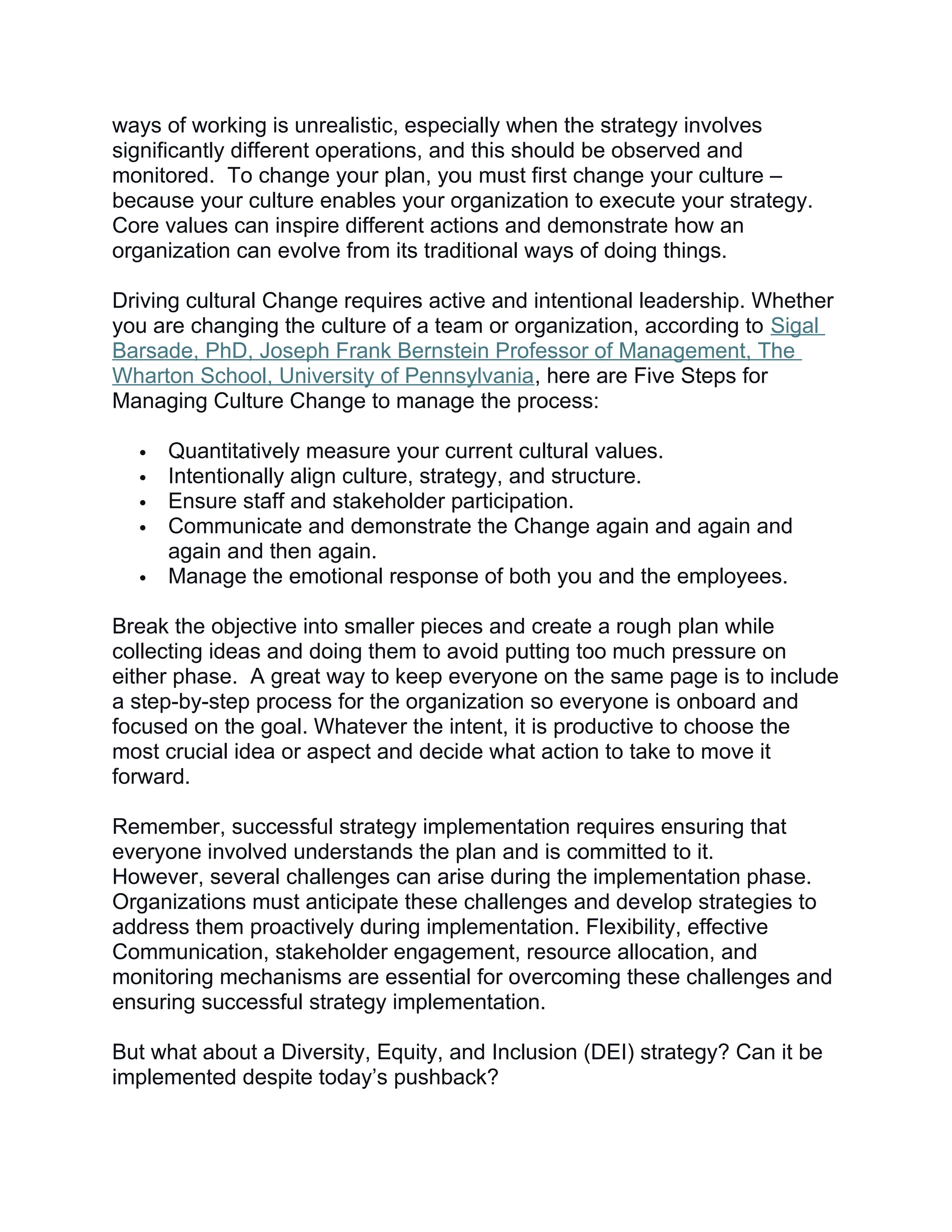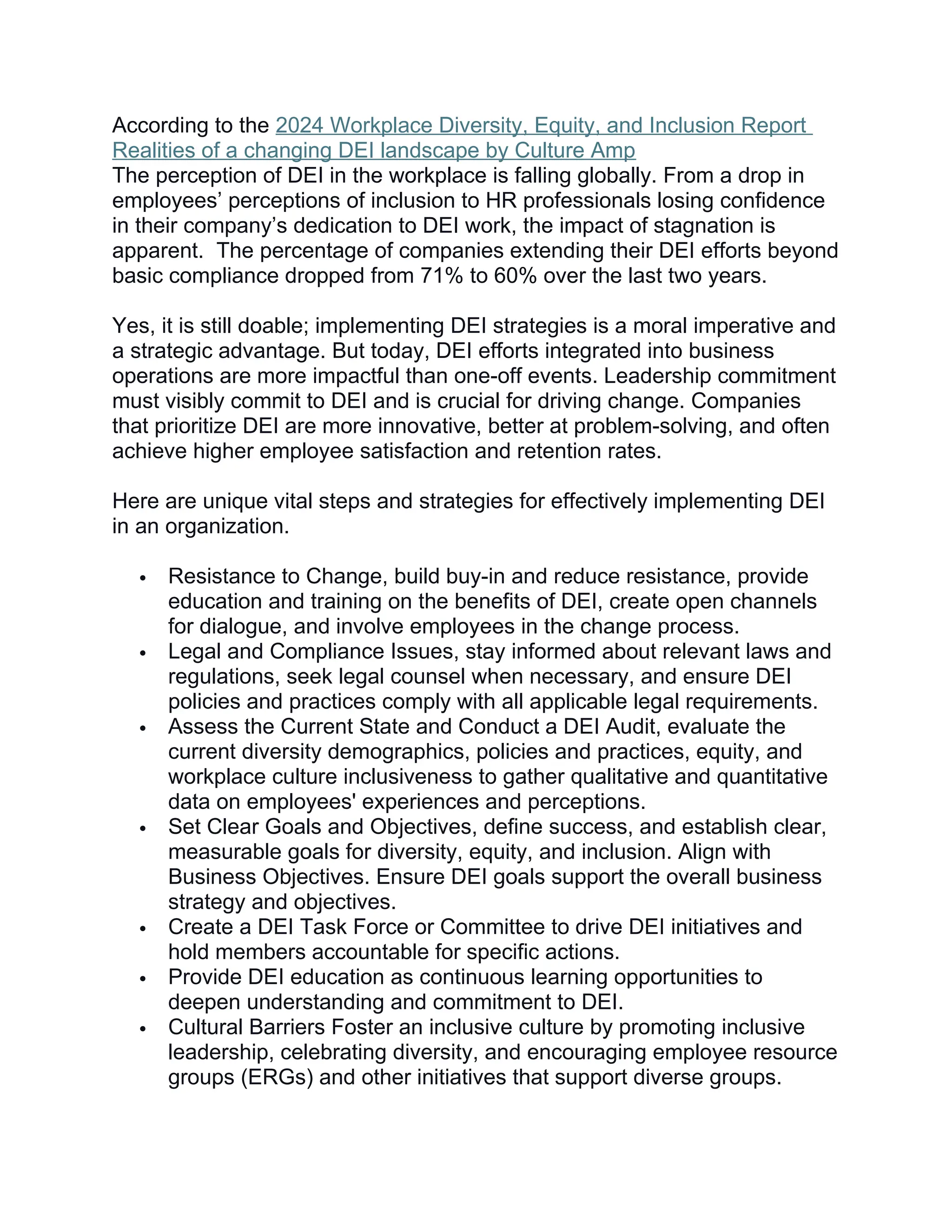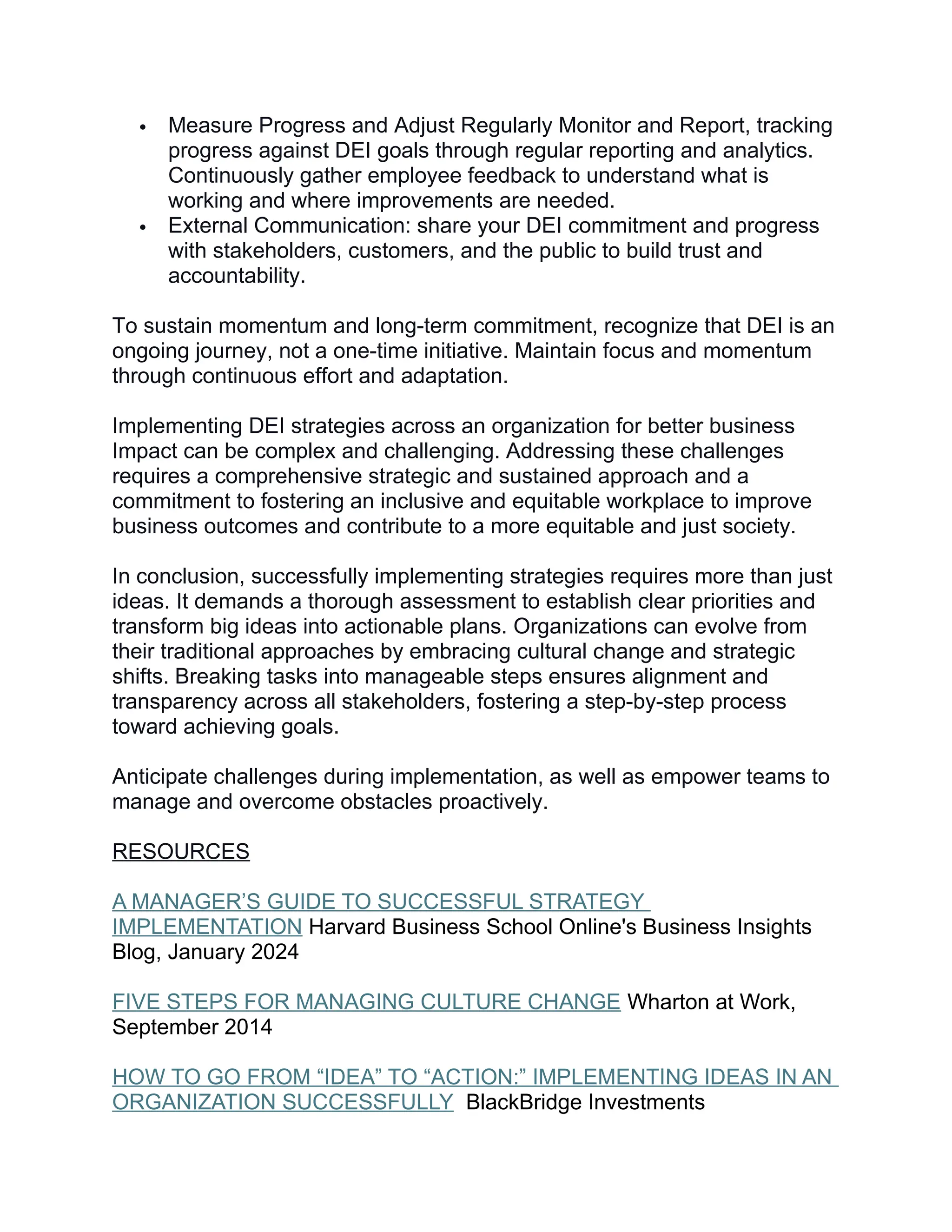The document discusses the importance of effective strategy implementation within organizations, highlighting that a significant number of strategic plans fail due to poor execution. It emphasizes the need for cultural change and leadership commitment in successfully integrating diversity, equity, and inclusion (DEI) strategies alongside conventional goals. The text outlines practical steps for overcoming challenges in strategy implementation, promoting ongoing engagement, flexibility, and clear communication for sustained success.




